Play outdoors in magical Family Adventure Garden at San Antonio Botanical Garden
I’ve visited a lot of play gardens, and I play in ALL of them. But one of the most exciting I’ve seen opened this spring at San Antonio Botanical Garden. The Family Adventure Garden at SABG offers the delights of nature exploration that children instinctively love, and that I and so many of my peers grew up with in the era of free-range childhood, before electronic devices, stranger-danger, and the stresses of overworked parents and overscheduled kids conspired to keep children indoors or on soccer fields.
A single entrance and exit helps keep younger children corralled, but never fear, kids — the garden feels huge and unconstrained. A striking rusty-steel arch with rebar crisscrossing along the top gives vines a way to climb and provides shade.
A fountain patio beckons just inside the gate, anchored by an elevated steel sluice and circular basin. The Watering Hole, as this space is called, represents part of the history of Texas, with its fountain carrying recycled water via elevated acequia (a community-operated watercourse) to a holding tank.
I imagine this is a cool spot for parents to hang out on a hot day while their kids play nearby on a grassy slope called Tumble Hill. Does anyone else have memories of rolling down a grassy hill as a child? I do.
A rocky dry creek is a familiar sight in this part of Texas, and like the real thing, this one is open to exploration.
In late fall, white mistflower blooms, scenting the air with its spicy fragrance.
Native and adopted plants like prickly pear, Mexican bush sage, and various fall-blooming grasses place this garden firmly in its South-Central Texas location.
A sandpit sheltered by an onion-shaped wood-and-steel arbor is tucked behind a billowy screen of bamboo muhly grass, which gives the Secret Garden its name. A semicircle of cast-stone chaise lounges invites parents to settle in comfortably while their little ones dig.
My friend Cat and I enjoyed a sit-down here ourselves.
Under a grassy hill, a tunnel invites exploration. I have to admit though, as a child, I’d have preferred playing on the grassy hill. In fact a weedy hill of dirt leftover from house construction was one of my favorite childhood play spaces until the developer of our brand-new neighborhood eventually had it carted off, to my sorrow.
A large shade pavilion anchors the central part of the garden, with one of the most spectacular features, at least in autumn, visible just beyond: a maze of pink-flowering Gulf muhly grass.
Look at it! The maze winds around and under a central shade tree. That’s one of the garden’s tropical-plant conservatories at left.
Looking back toward the Prickly Pear Pavilion
Late October and early November is peak season for Gulf muhly grass, and I was thrilled to see this big swath of it in bloom.
It’s not much to look at in spring through early summer though, which is why, I imagine, there are also dwarf yaupon hollies outlining portions of the maze — so there’s something to see when the muhly grass is dormant.
‘Pam’s Pink’ Turk’s cap, a cultivar of the native red-flowering variety
A LEGO-sculpture dragonfly sits in Cypress Spring, which represents a natural spring where water bubbles up from underground aquifers.
Another sandpit here gives little kids a place to dig, shaded by an onion-shaped — or dinosaur-ribbed? — structure of curved steel and cedar posts.
The detail given to shade structures like this curved mesh arbor over a bench is something that sets apart Texas gardens, I think, and especially those designed by Christine Ten Eyck.
In the rear part of the garden are more-structured play spaces, like a little stage and stump seats for the Thistle Theater…
…and whimsical play houses.
A place for your little hobbit to play.
The rugged beauty of South/Central Texas native plants is always on display, including this slope of soft Mexican feathergrass studded with spiky yuccas and toothy sotols.
Another angle, with the glasshouse and its palm trees visible in the distance.
Stairs lead to the top of Prickly Pear Peak, where a ripple-like steel arbor will eventually become a vine-shaded retreat-with-a-view.
Vine tendril
Shade structure framework
A mockingbird was enjoying the scene as well.
Sparkler-like heads of windmill grass
More autumnal beauty
Other plants were still in glorious fall flower.
In Pecan Grove, a shallow amphitheater of limestone blocks and turf invites balancing, climbing, and jumping. The best play spaces are open to interpretation like this — just rocks, grass, and a hill.
Here’s another creative play structure: cedar posts and stumps placed in an undulating line. I can imagine pretending this is a swinging bridge across a ravine or stepping stones across a croc-infested swamp.
But the pièce de résistance of the garden is this: a re-creation of a limestone creek winding through a Hill Country canyon, with springs bubbling up and thunder echoing in the hills, portending a rainstorm that’ll send water coursing downstream.
I’ve spent a lot of time hiking and exploring in creeks like this around Austin, and the realism of this manmade space is amazing. Sycamores line the creek, fringed by clumping grasses. Rusty orange and creamy white limestone boulders lie scattered as they do in nature. We watched kids running through the shallow stream, just as my own children once did in Bull Creek. It’s magical.
No Name Creek (I love it) starts at Thunder Ridge, where limestone bluffs surround a spring-fed shallow pool and hidden speakers play the rumble of distant thunder. “Follow the water from rain to drain,” a pdf for the garden explains. “In the Hill Country, water goes underground into an aquifer before bubbling back up to the surface as a spring. Once the water bubbles up above the ground, the water can be collected and used.”
As in real life, water seeps from the top of layered limestone bluffs…
…nourishing maidenhair ferns that grow from moist crevices.
I love that kids can run and play and explore in the creek, getting wet and dirty just as they would if exploring a canyon creek in a greenbelt somewhere. No Name Creek runs seasonally, and I read on the website after my return that it’s now turned off until spring, so just be aware of that when you go.
I also talked with Christy Ten Eyck, the landscape architect who designed and built the Family Adventure Garden as well as the new culinary and entry gardens (see my last post), to ask her how she came up with this really exciting play garden built around nature. She said, “We wanted to tell the story of our region and water/Hill Country stream, dry rock creek and native plants.”
Telling the story of Central/South Texas with plants, rocks, and water. It’s a story that every child — and parent — should hear, ensuring that the beauty and magic of our region will be forever etched in their hearts.
Coming up next: More butterflies and Halloween scarecrows at San Antonio Botanical Garden. For a look back at SABG’s stylish culinary garden and butterfly-filled entry garden, click here.
I welcome your comments; please scroll to the end of this post to leave one. If you’re reading this in a subscription email, click here to visit Digging and find the comment box at the end of each post.
_______________________
Digging Deeper: News and Upcoming Events
Join the mailing list for Garden Spark Talks! Inspired by the idea of house concerts, I’m hosting a series of garden talks by inspiring designers and authors out of my home. Talks are limited-attendance events and generally sell out within just a few days, so join the Garden Spark email list for early notifications. Simply click this link and ask to be added.
All material © 2006-2018 by Pam Penick for Digging. Unauthorized reproduction prohibited.


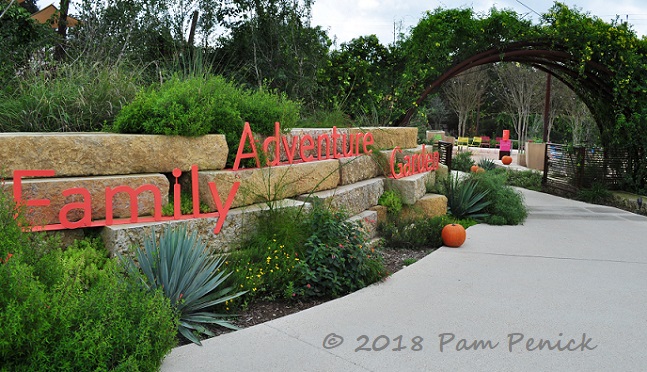
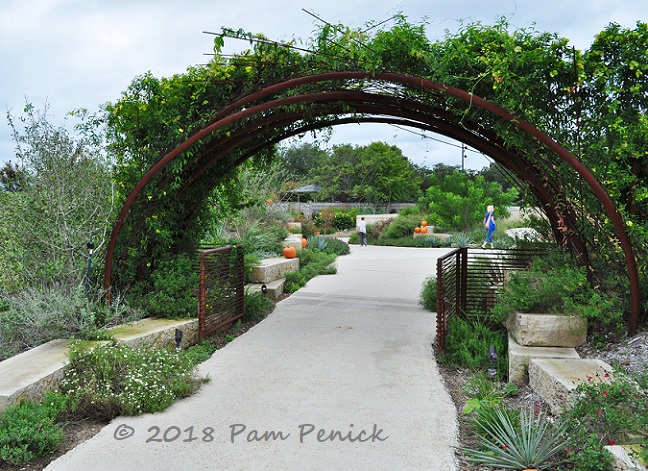
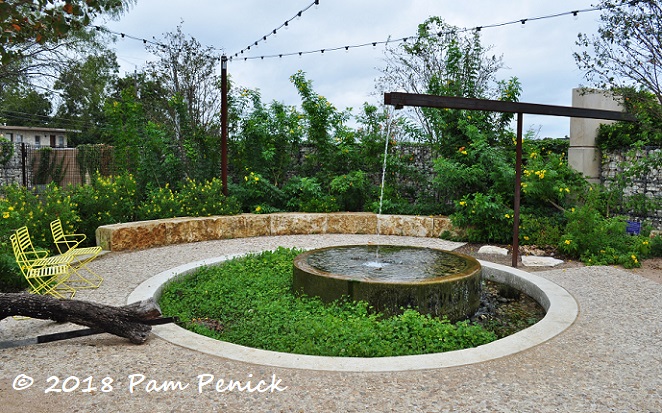
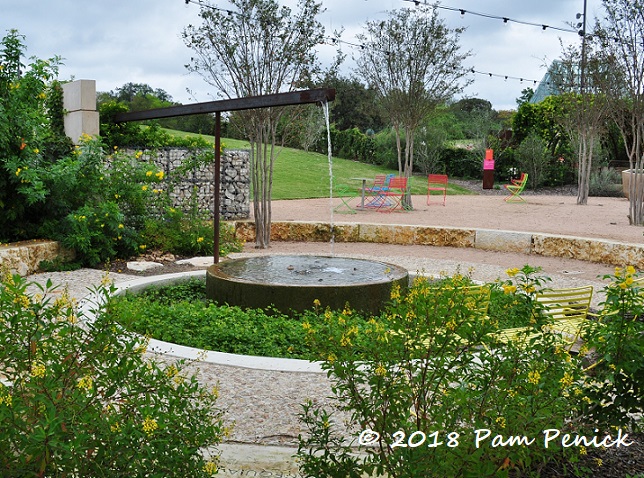
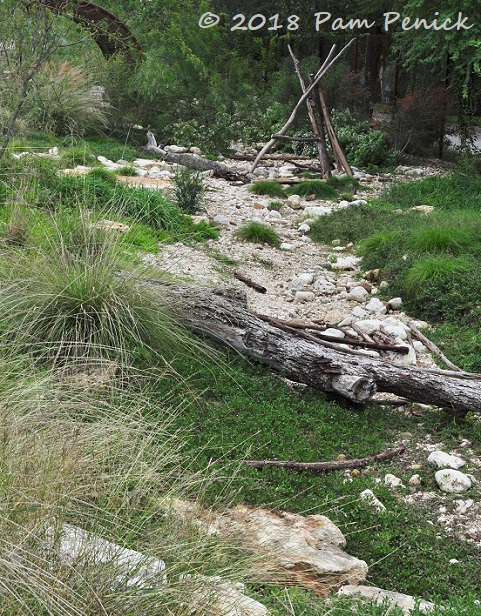
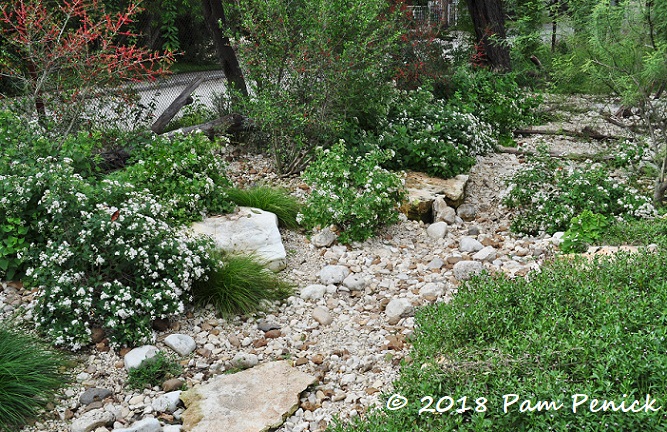
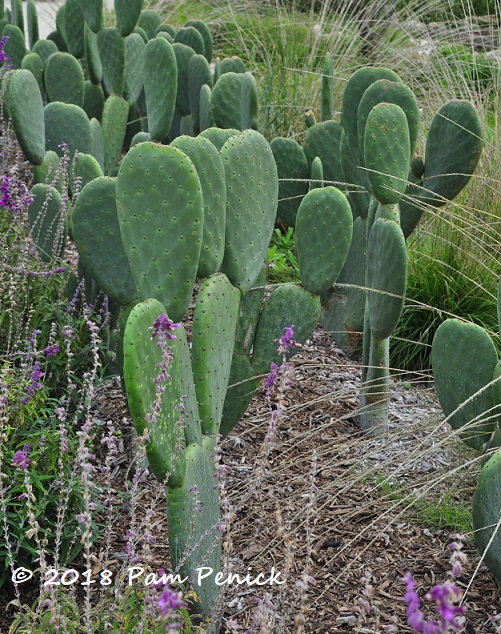
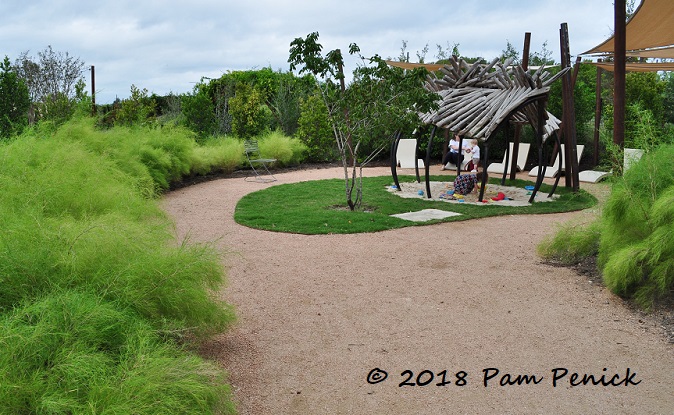
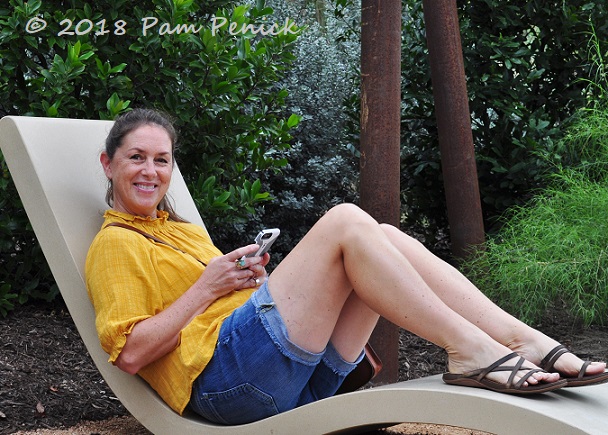
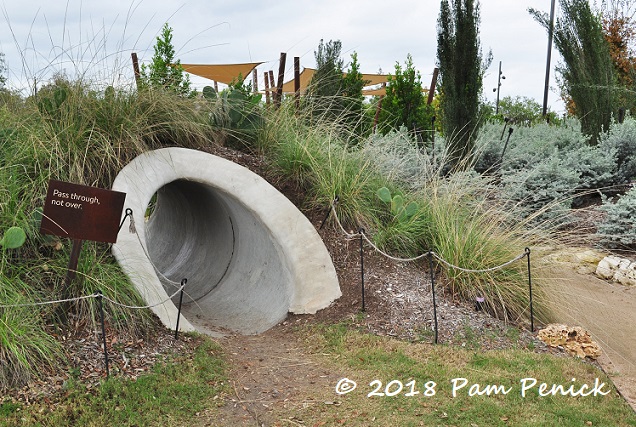
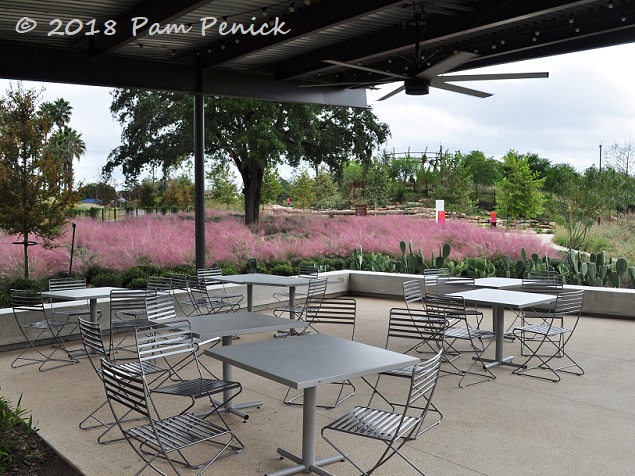
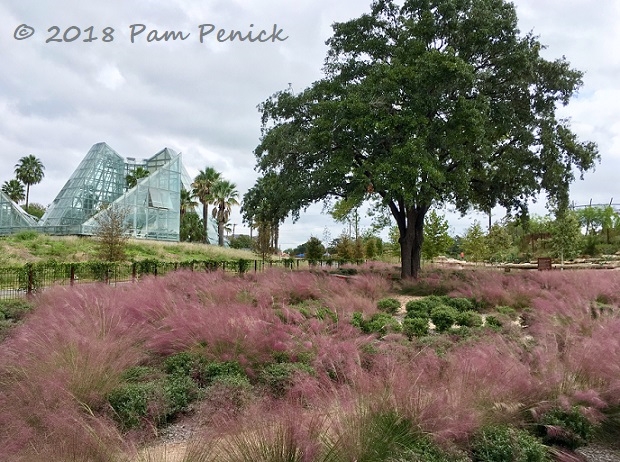
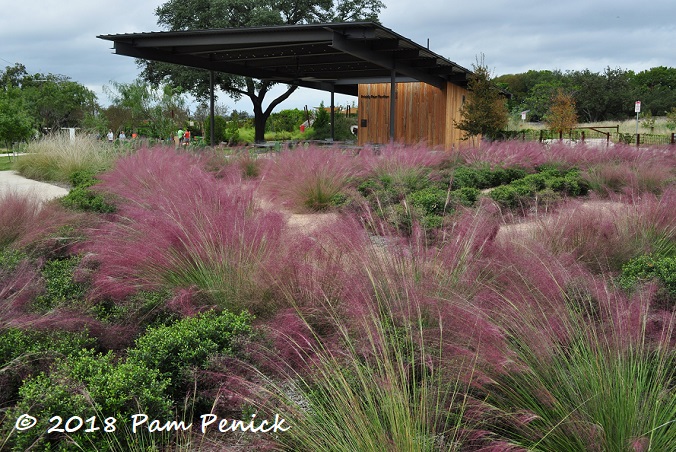
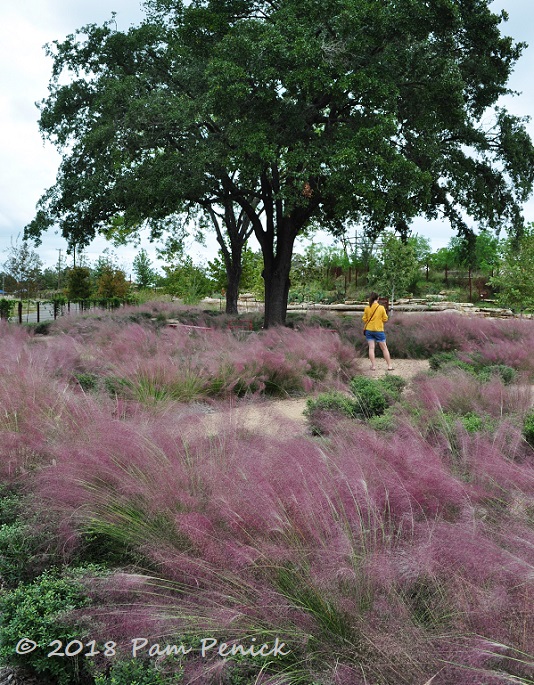
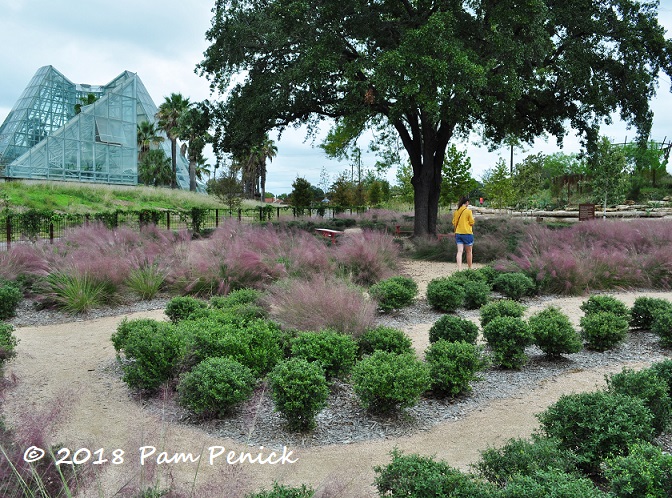

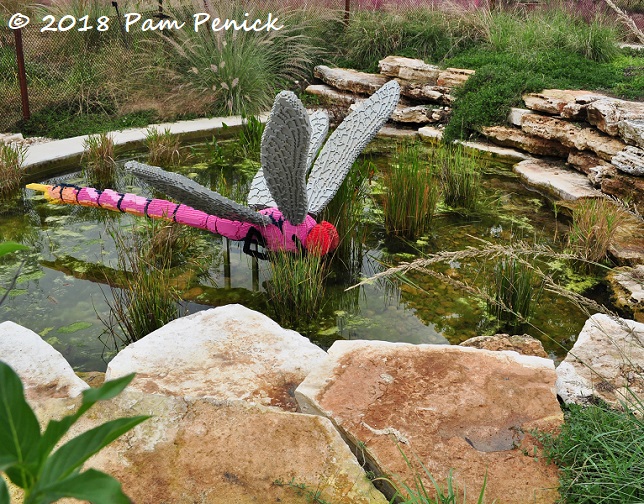
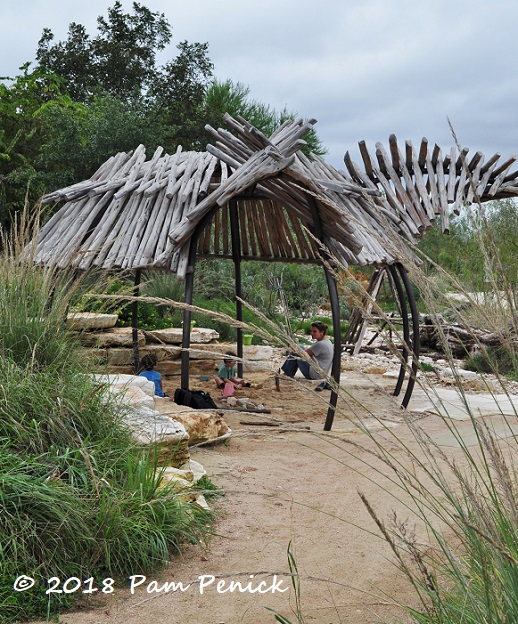
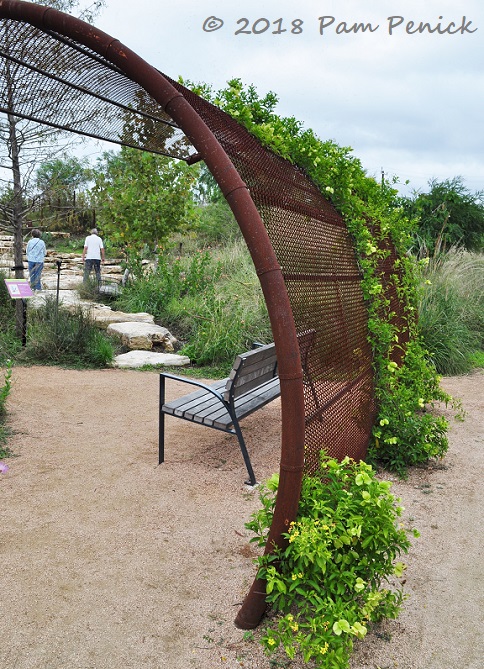
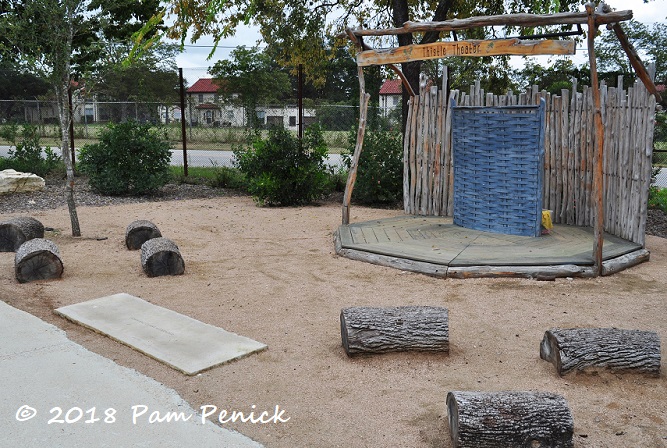
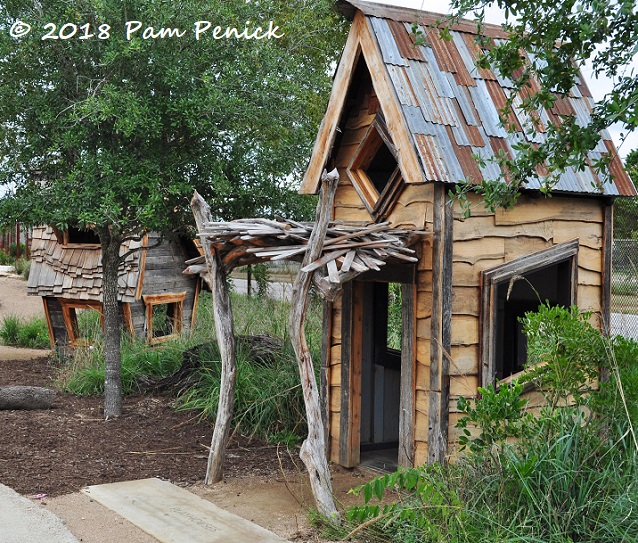
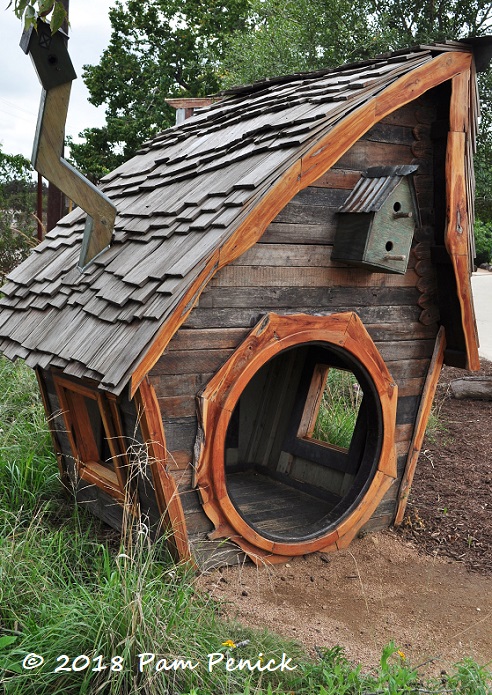
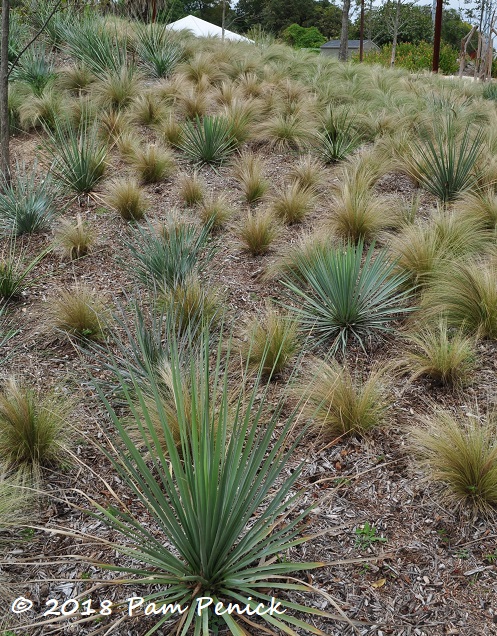
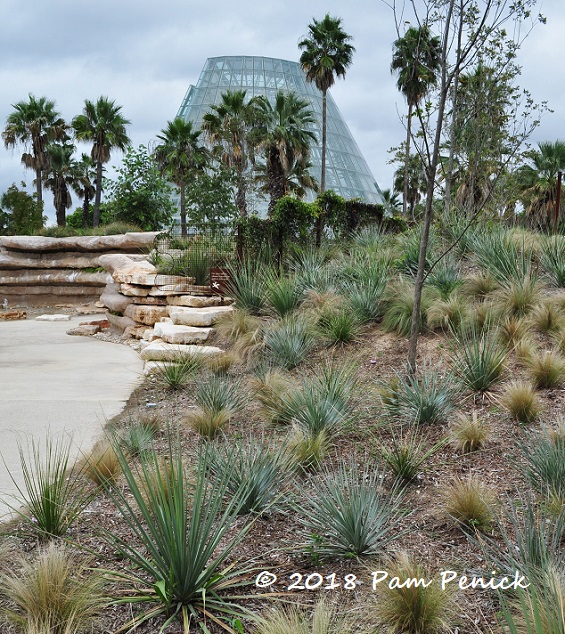
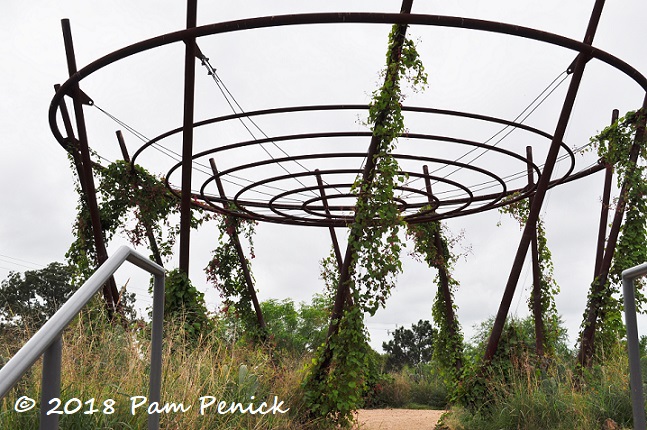
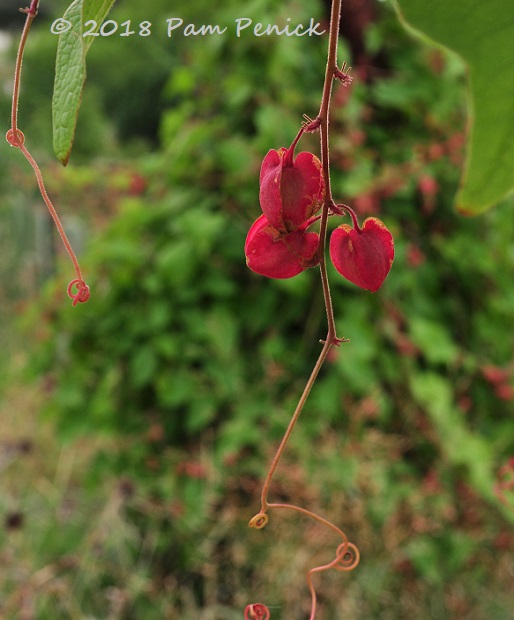
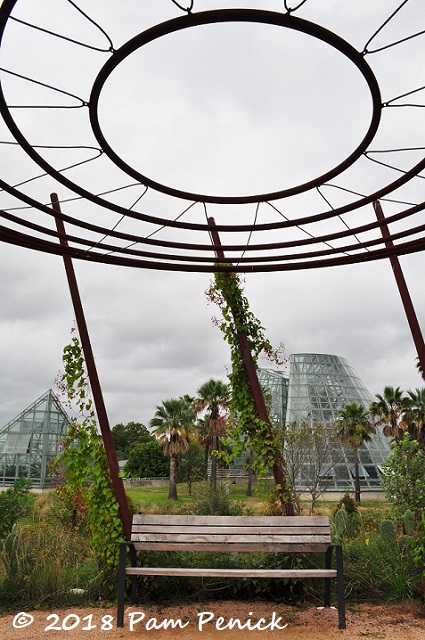
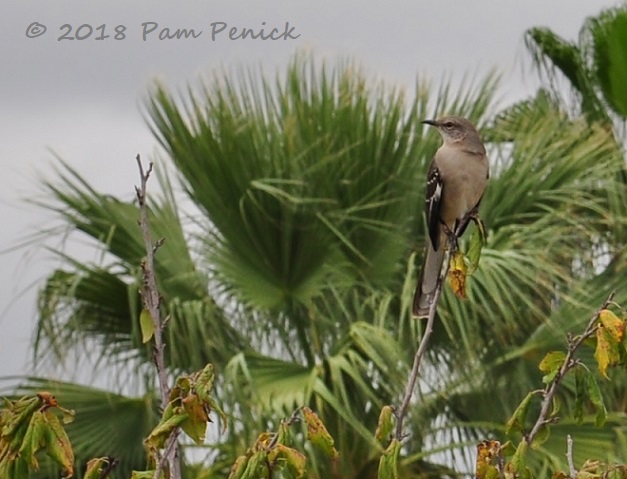
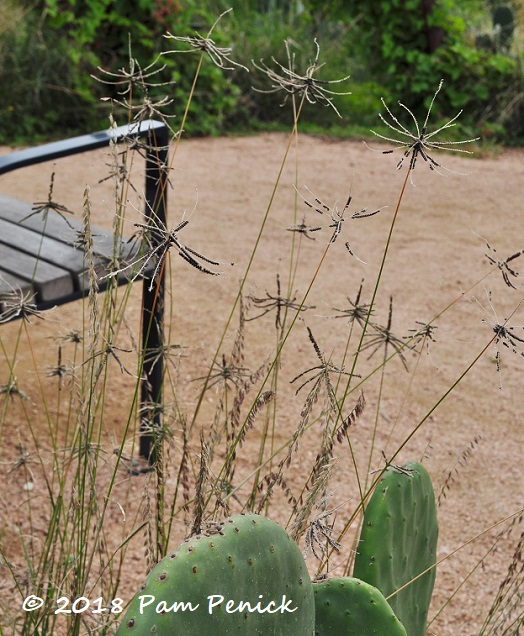
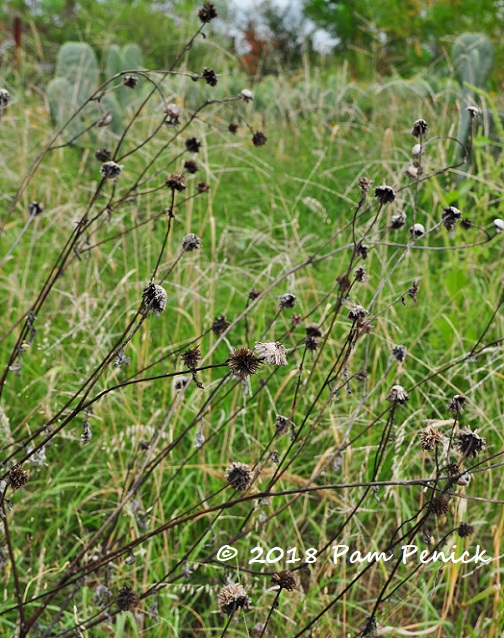
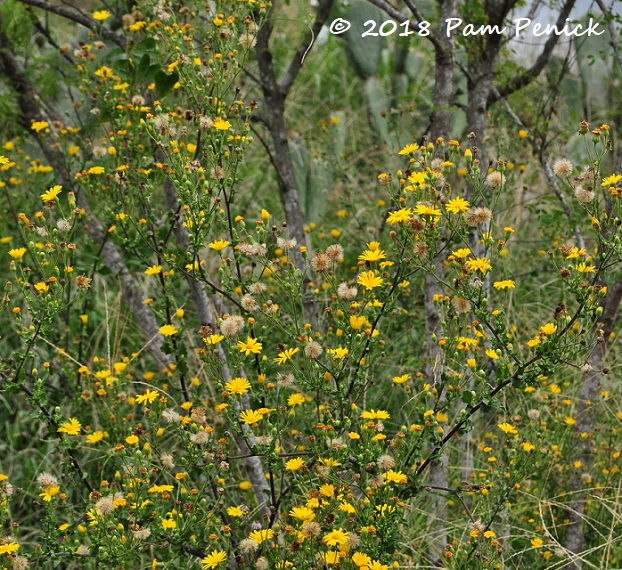
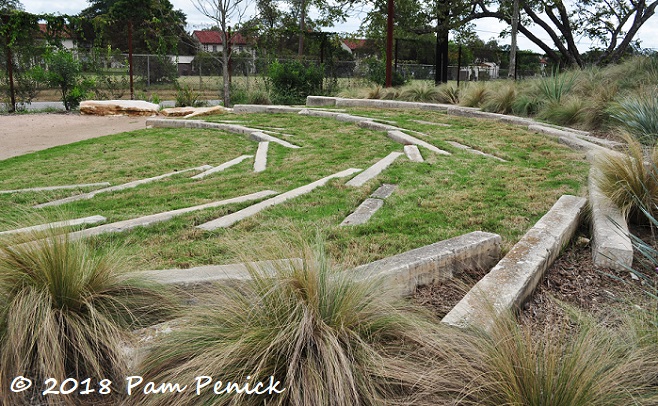
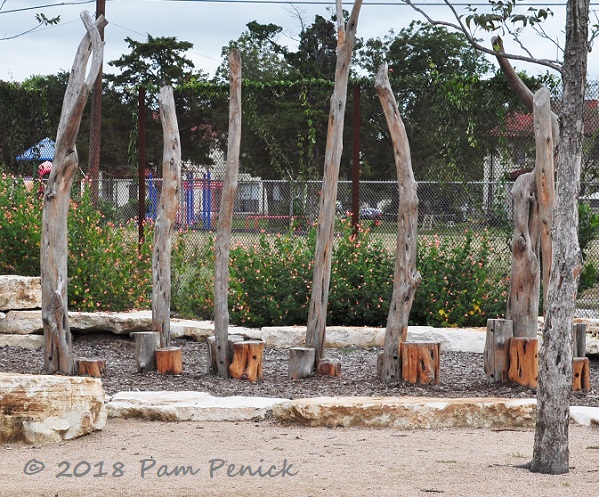
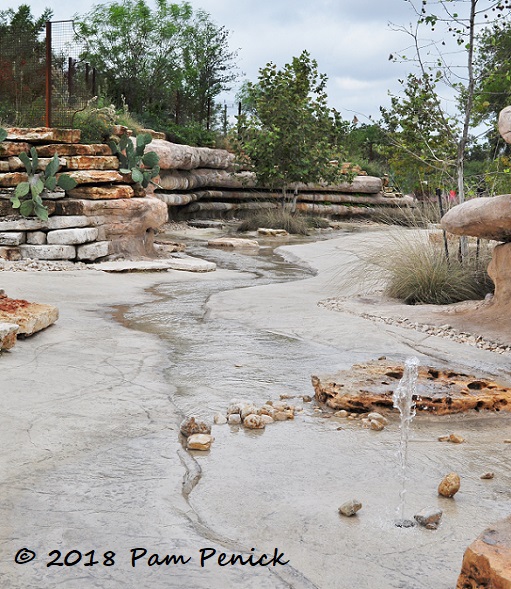
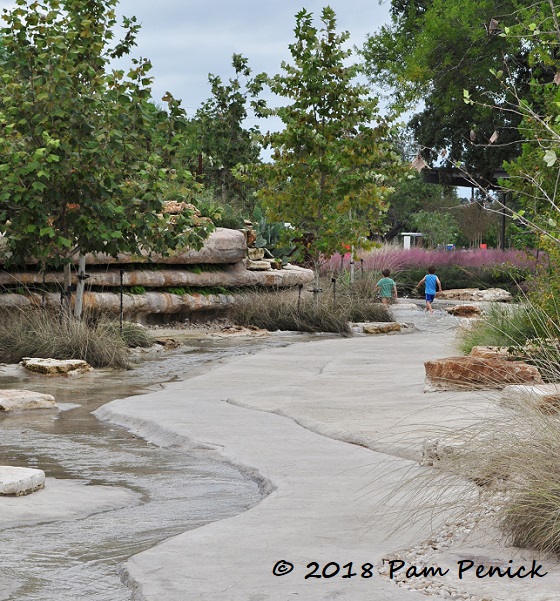
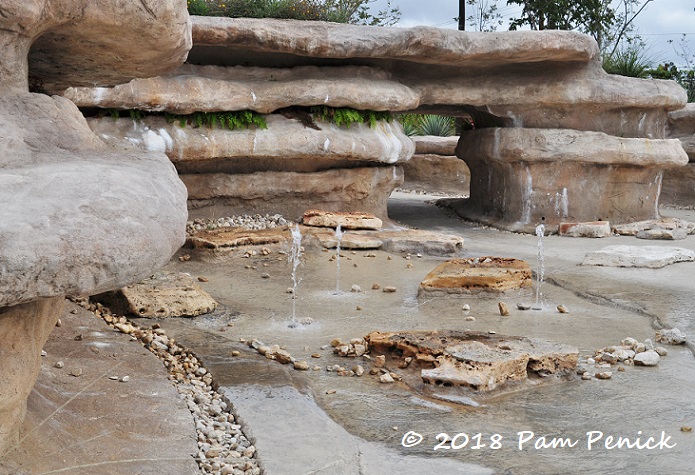
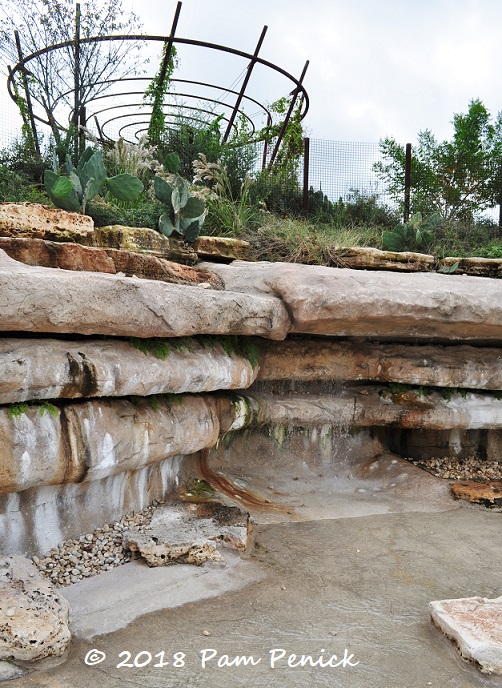
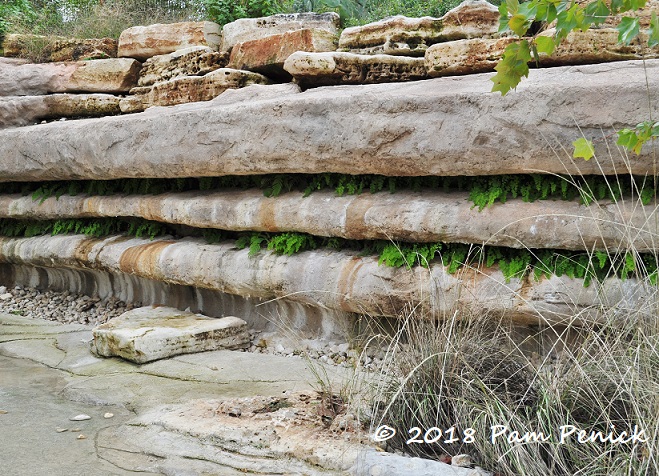
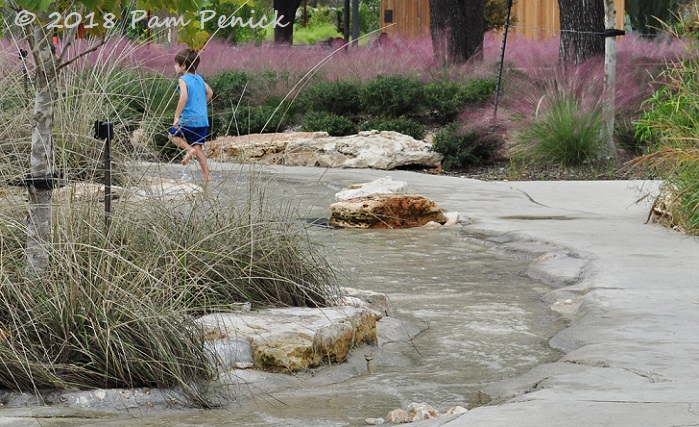
A lot has happened there in just one year. I think we need to pay another visit.
Yes indeed. I was bowled over.
I’m SO impressed by this garden, especially the adventure area. My local botanic garden is sadly short on children’s play areas (which can make the tours I give frustrating). We’ve got an area created close to 50 years ago around nursery rhymes but those are meaningless to most of today’s kids. A remodel is planned but I haven’t yet heard anything on whether the foundation is planning a concept redesign.
I was wishing both this garden and the family garden at the Wildflower Center had been completed when my own kids were young. Lucky families who can visit these spaces many times with their kids as they grow up.
This is a story I would love to immerse myself in. What a great place.
It really is.
Excellent as all the other spaces seem, you did save the best for last. That stony stream is a *magnet*, that makes me want to be there with bare feet this minute. What a fantastic place for young Texans.
Ten Eyck really knows what she’s doing. The cascade water feature in the culinary garden is, on an adult level, the equivalent of that magnetic stream bed in evoking your landscape, just more abstractly. Enjoy, San Antonio!
Ten Eyck does have a remarkable vision for unique gardens that deeply reflect a sense of place.
Oh man, this is just fantastic. Everything Christy Ten Eyck does is golden. I’m going to need to make a visit– I don’t think I’ve been down there since our blogger group went, ages ago!
You’re overdue for a visit, Lori. Maybe we should make a return trip in the spring.
A garden that can bring out the “kid” in all of us. Those play houses are magical but then so is everything else…a big, BIG ‘Thank You’ for this.
You bet, Ricki. I had so much fun exploring this garden.
What a wonderful garden – thanks for sharing it. I was impressed by the family garden at the Wildflower Center, but this one looks truly special.
I love that she’s trying to evoke the sense of place of Central and South Texas — magic.
Ten Eyck really provides a sense of the geology of central/south Texas even as she creates areas for exploration and play.
Looks like a great garden, and I love the site redesign! Congratulations, Pam. I know what that can entail.
Thanks, Helen! Yes, the website redesign was a lot of work, but it *really* needed an update.
[…] Barefoot splashing in the creek is encouraged, much like at the Family Adventure Garden in San Antonio. […]